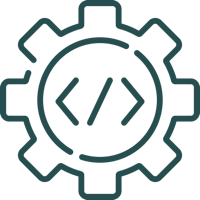-
IT infrastructure and application of digital solutions
Our Company has successfully established the State Agency for Public Service and Social Innovations infrastructure under the President of the Republic of Azerbaijan and "ASAN service" Center No. 1.
Design and implementation of all necessary components required for the work of the agency and the center, in particular, the establishment of network and server infrastructure, the configuration of equipment, the establishment of queuing system, call center, development of the website, etc. have been done.
The LAN project started with developing technical specifications and was finalized after a detailed analysis and receiving the requirements of the customer company. Initially, key points such as the topology used, the required number of connection ports, the number of key users and devices were identified, and the optimal location for the server and the construction of local area highways were determined. One of the main requirements for the LAN was its resilience.
While preparing the LAC project, we identified the shortcomings of the future local network and proposed measures to increase its resilience based on HP network equipment.
The scheme of the active component arrangement and its connection to local and electrical networks is designed to make the whole system as reliable and durable as possible.
We can now say that even in an emergency, such a network will not completely lose its capacity or will continue to operate for a long time enabling users and services interacting with it to complete their work on the local network.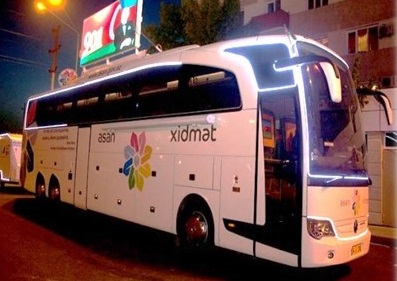

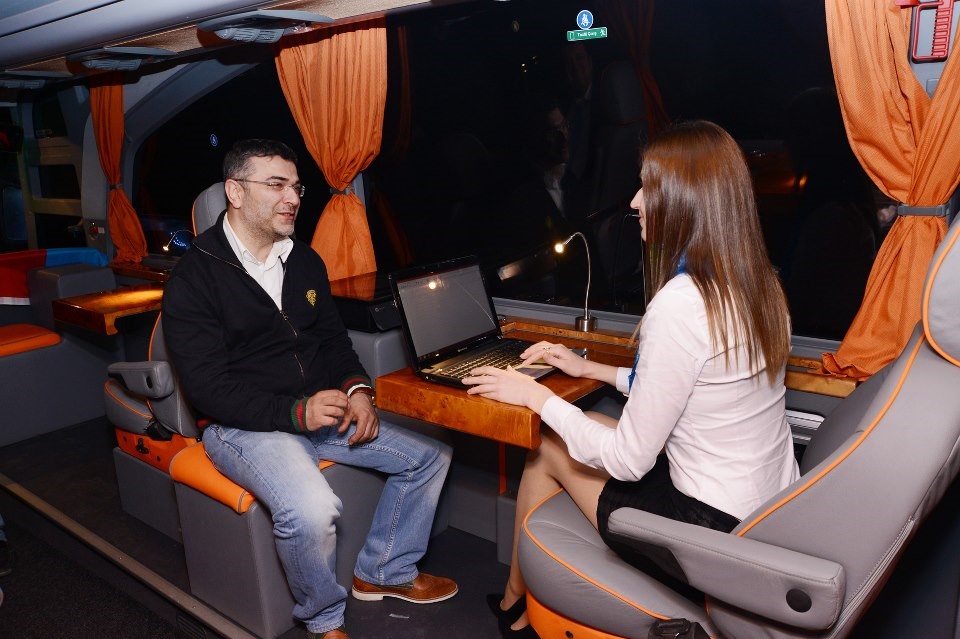
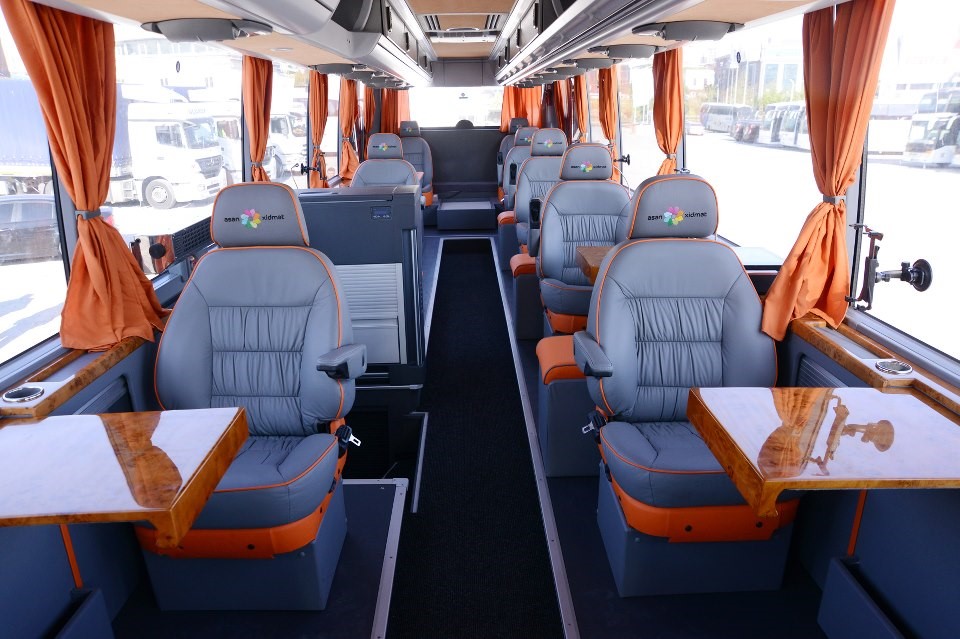

-
e-Signature - Development of a Public Key Infrastructure project
Another project of our Company of national importance is the "e-Signature - Development of a Public Key Infrastructure" project, which is currently being implemented in cooperation with Microsoft and Azerin LLC.
All documents are kept both in written and electronic versions worldwide and in Azerbaijan. Stamps and signatures are usually used for the official registration of papers.
Automating procedures and conducting documentation processes in an electronic version requires the transition of the signing process to an electronic version.
An electronic signature is the same as a handwritten signature and contains a symbol of 2048 bits. Everyone must have a unique electronic signature. To have an electronic signature, a person must have a certificate. The established National Certification Services Center issues certificates to civil servants, businessmen, employees, and citizens according to their field of activity. The primary goal of our Company is to implement the e-signature project in Azerbaijan successfully. The project's primary goal is to create a National Certification Center in Azerbaijan applying modern information technologies.
AAI is a security infrastructure based on a cryptographic public key that manages certificates. The primary purpose of developing the AAI infrastructure is to create a National Certification Services Center.
The main principle of the center is to provide government officials, staff of public and private enterprises, business people, and citizens with certificates to sign any electronic documents in the future using e-Signature effectively.
Structure of the National Certification Service Center:
1. Higher Certification Services Center
• Possessing a self-signed certificate;
• Issuance of certificates for all subordinate centers;
• Development of certification policy and application to the centers.
2. E-Government Center
• Issuance of certificates to citizens, legal entities, and business people of the Republic of Azerbaijan and Management of certification processes;
• Ensuring interaction with the authorities.
3. Center for Electronic Authorities
• Provide internal and inter-organizational electronic document workflow;
• Issuance of certificates to ministry and committee staff and Management of certification processes
Procedures implemented by the National Certification Services Center:
1.Processes of certification services - issuance, suspension, restoration, and cancellation;
2.Smart card services - issuance of smart cards containing two certificates (e-signature and authentication);
3.Setting time indicators;
4.Provision of the network directory (possibility to connect to the CRL and certificate registry with LDAP v3 and HTTP protocols).-
Development of a unique website for the magazine
In 2014, Ultra Technologies developed the official website http://baku-media.ru, distinguished by its unique design and functionality. The website is specially designed according to the chosen unique design. The key features of the website are its information completeness and functionality.
The site comprises a magazine, guide, Baku tour, online exhibitions, subscription, video, and photo sections. The information is constantly updated through the inner control panel.
The information on the site is fully managed by the built-in content management system (CMS). The control panel is highly user-friendly. You can quickly and efficiently update the site information through the control panel.
The site is provided with a high level of security. One of the site's main features in terms of security is its resistance to hackers and all outside attacks. Thus, all possible security operations were considered during code writing.-
Redesign of the Training Center website
In 2015, Ultra Technologies developed the website http://bbtc.gov.az, distinguished by its functionality, design, and high-security system.
The site contains information about the center, representative offices, distance learning, news, announcements, projects, appeals, legislation, library sections.
The website is provided with a high level of security. One of the site's main features in terms of security is its resistance to hackers and all outside attacks. Thus, all possible security operations were considered during code writing, and every precaution was taken to ensure that the code was not broken during the installation of the servers.
The information on the website is fully managed by the built-in content management system (CMS). The control panel is highly user-friendly. You can quickly and efficiently update the site information through the control panel.
The website is available in 2 languages. The latest technologies are used to develop the website, security, and user convenience have been considered.-
Development of a unique website for the center
In May 2013, the official website of the Heydar Aliyev Center was launched. The site is distinguished by its functionality, unique design, and high-security system - developed by Ultra.
The site contains interesting and extensive information in sections such as About us, Heydar Aliyev, Architectural symbol, Museum. In addition, the site has pages such as Events and News, Photo and Video Gallery, Virtual tour, Contact us, and E-ticket.
The website is provided with a high level of security and is fully managed by the built-in content management system (CMS) that ensures a higher level of protection.
One of the site's main features in terms of security is its resistance to hackers and all outside attacks. Thus, all possible security operations were considered during code writing, and every precaution was taken to prevent cyber-hack of the code during the installation of the servers.
The website is based on high-performance and rapid PHP programming technologies, which consider the daily updating of the information entered into the website and reaching these updates to the visitors and the structural convenience of the website for the visitor. The website was developed using HTML5 programming technology. It is available in 2 languages. The possibility of easy integration with any other systems was considered during the programming.
Website address: heydaraliyevcenter.a
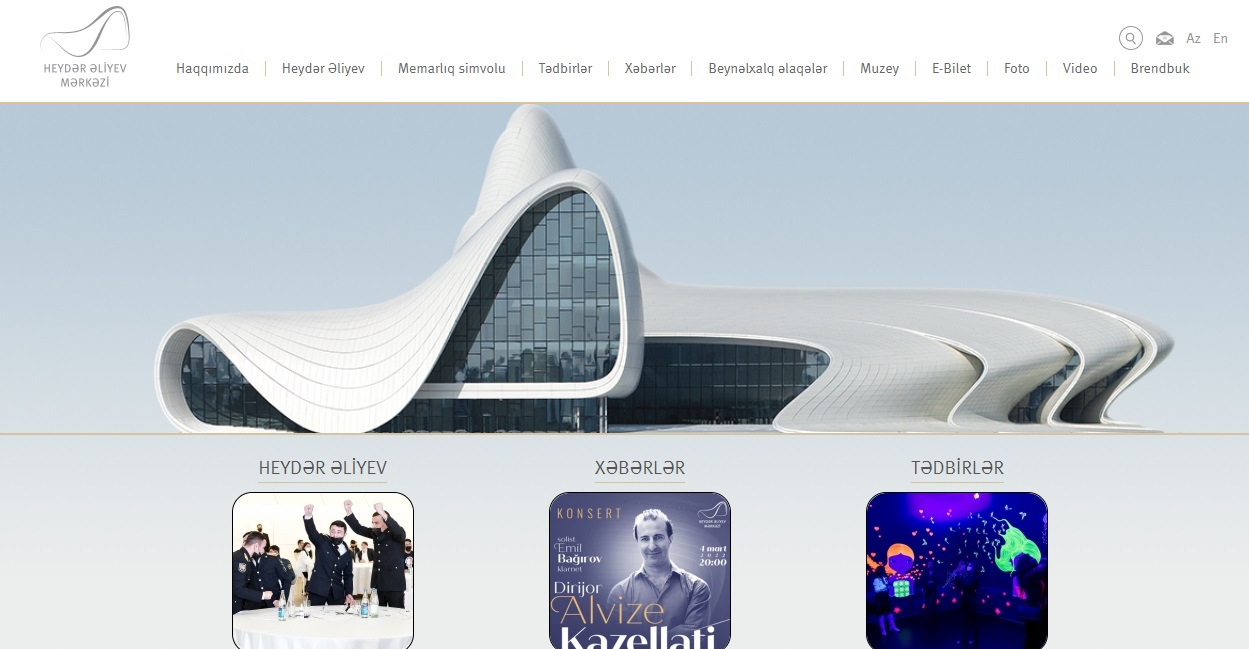



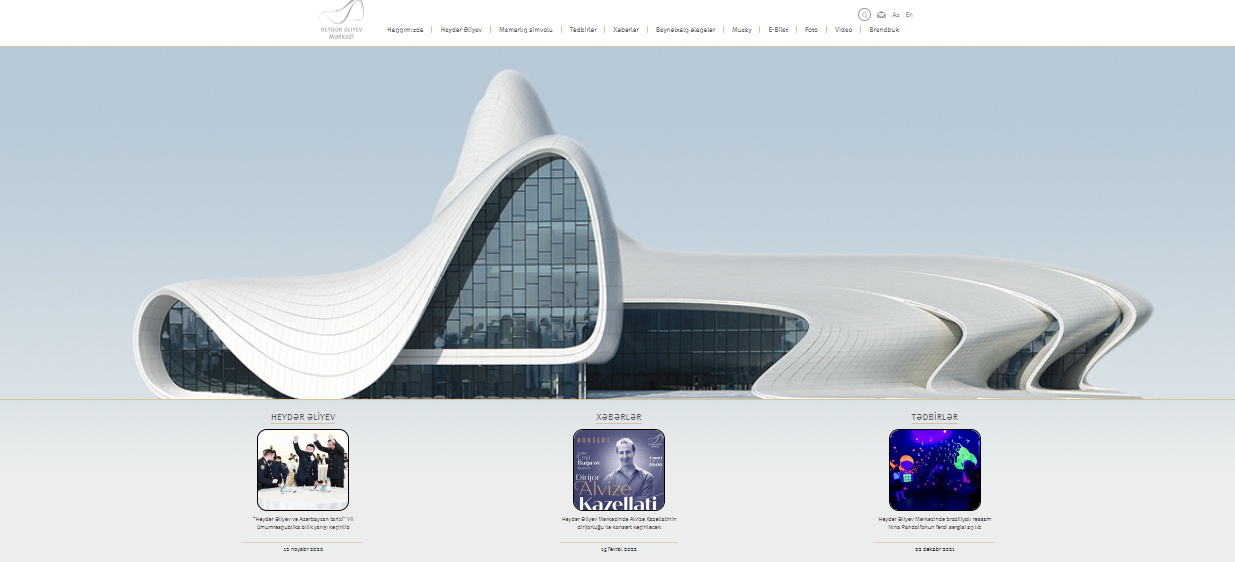
-
Automation of "Electronic Document Workflow" system
Together with NikoylBank staff, specialists of Ultra Technologies implemented the Doclogix e-Document Workflow system. Successfully implemented within six months, the system is designed for 100 intrabank users and allows to automate incoming and outgoing documents, including the internal correspondence.
As a result of the application of this system, the creation, approval of new documents, and control over these processes by management are carried out more quickly and electronically.
The application of the Doclogix ESD system mainly reduces the number of errors made by bank staff in the operational process. It automates data entry from one system to another, thus eliminating the need for mechanical data entry. In addition, it prevents loss of time when storing, archiving, recording, searching, and registering paper documents in special folders.
Advantages of the applied system:
• Systematization of the work process on draft documents;
• Ability of all users to work synchronously on the server through a web browser;
• Prevention of document loss due to hosting;
• Ability to access, sign and view documents via an encrypted link from anywhere;
• Availability of e-mail or other latest information on incoming documents.
Ultra Technologies is always seeking out new possibilities. For example, plans are underway to obtain additional licenses to expand the system in branches of NikoylBank, as well as to use the system in mobile versions of iOS and Android operating systems. Building on global experience, we can say that the Doclogix ESD system is a unique option for automating work processes in banks and various business areas.
The number of Doclogix ESD users up to 25,000 and 16 years of experience in this field suggest that applying this software in Azerbaijan's banking and business spheres will significantly impact the practical development of production and business processes.-
Automation of financial and accounting
Earlier this year, ULTRA Technologies initiated cooperation with Baku Metro to automate financial and accounting on 1C 8.3 at Baku Metro Closed Joint-Stock Company.
The Company will use the 1C 8.3 accounting program in the Metro to keep records of fixed assets and intangible assets, inventories, and low-cost assets, prepare statistical and other reports, and conduct payroll and salary payments and financial information systematization. Moreover, the system provides such functional possibilities as preparation of estimates of construction works, cash management and tracking, the grouping of expenses, preparation of reports on the balance of the estimate, the balance of the accepted objects, etc.
This system will allow controlling the performance of the head office and 26 groups subordinated to the Metro from a single center. The Company's analysts said that by introducing the system, Baku Metro Closed Joint-Stock Company will have the advantage of organizing and optimizing the effectiveness of financial and accounting policies, the transition to international IFRS reporting, and other benefits.
1C 8.3 Platform based on the long-term experience of ULTRA has been already applied at the Ministry of Economy and Industry of the Republic of Azerbaijan, the Ministry of Justice of the Republic of Azerbaijan, the Forensic Science Centre of the Ministry of Justice of the Republic of Azerbaijan, the Ministry of Communications and High Technologies of the Republic of Azerbaijan, ASAN Service, State Insurance Company of the Azerbaijan Republic, Central Bank of the Republic of Azerbaijan.-
Establishment of examination rooms for Main Traffic Police Department
The automated system of practical examination rooms for issuing a driver's license
The computerized system of practical examination rooms for issuing a driver's license in the traffic police in Baku, Sumgayit, and 12 districts of the Republic of Azerbaijan was applied. ULTRA specialists installed, developed, and launched the system during the project.
Also, 1-year technical support service was provided after the introduction of the system.

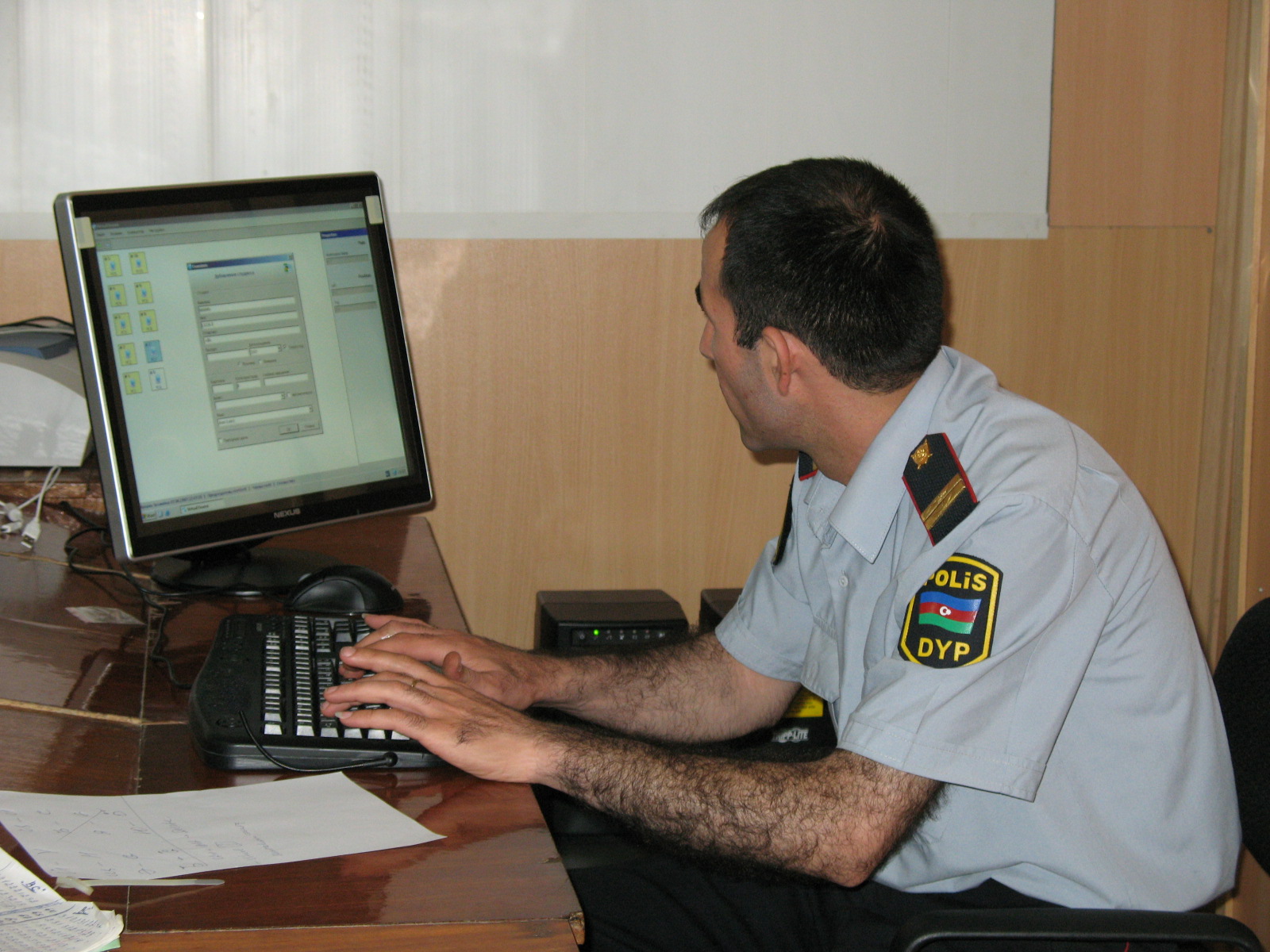

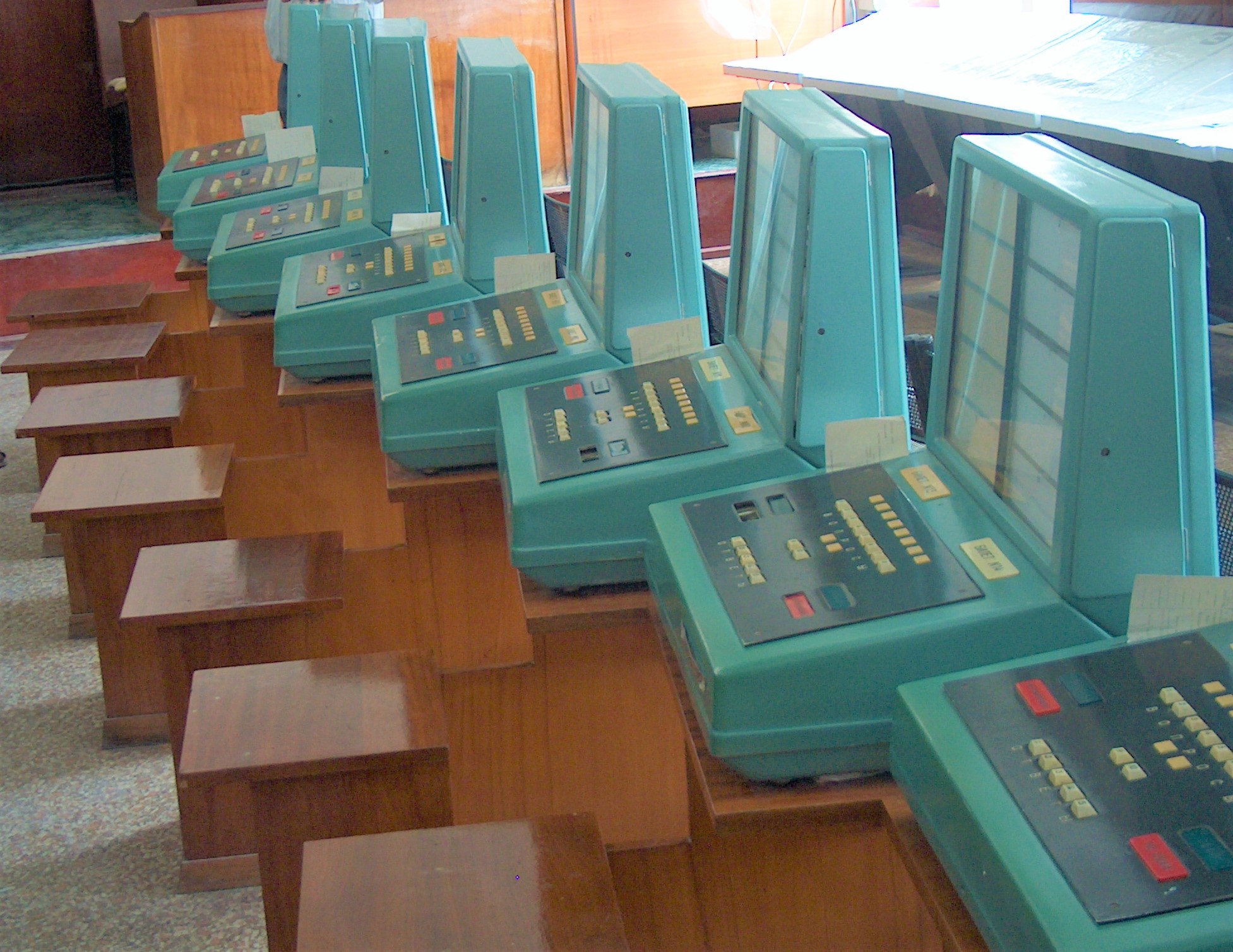

-
e-Education Project: Computerization of the Education System
Database of General Education InstitutionsThe Database of General Education Institutions stores all information about the staff of the institution the education institutions are administered by, including students and staff of this education institution. The administrators of the institution are responsible for managing this information in the system.The system is designed to store all information about the general education institutions of the republic, as well as about students and staff of these institutions, in a single database. It enables to generate and obtain static and dynamic reports based on system data.All public and private education institutions have accounts in the Database of General Education Institutions, through which they enter their data into the database.Database of Extracurricular InstitutionsThe Database of Extracurricular Institutions stores all information about extracurricular institutions in sports and art, students, and staff of these education institutions. The administrators of the institution are responsible for managing this information in the system.The system is designed to store all information about extracurricular institutions, as well as about students and staff of these institutions, in a single database. It enables to generate and obtain static and dynamic reports based on system data.Database of Pre-school Education InstitutionsThe Database of Pre-school Education Institutions stores all information about the pre-school education institutions, the children studying in these education institutions, and their staff. The administrators of the institution are responsible for managing this information in the system.The system is designed to store all information about pre-school education institutions, children studying in these institutions and their staff, in a single database. It enables to generate and obtain static and dynamic reports based on system data.All public and private pre-school education institutions have accounts in the Database of Pre-school Education Institutions, through which they enter their data into the database.E-System of Art SchoolsThe E-System of Art Schools stores all information about art schools, students studying in these schools, and their staff. The administrators of the schools are responsible for managing this information in the system.The system is designed to store all information about art schools, students studying in these schools and their staff, in a single database. It enables to generate and obtain static and dynamic reports based on system data.

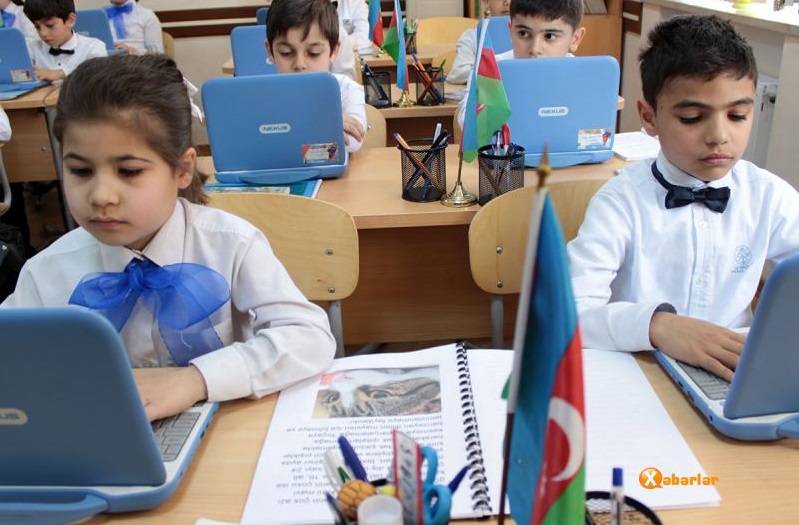

-
Interactive lesson opportunities with Smart classroom solutions
Many serious steps have been taken in using information and communication technologies in the Republic of Azerbaijan in recent years. This direction has become one of the priorities of state policy. For example, one of the essential aims set by "The Reform Program in Education in the Republic of Azerbaijan" adopted by Heydar Aliyev, the National Leader of the Azerbaijani Nation in 1999, was to teach the young generation to use information and communication technologies.
Under the Decree of the President of the Republic of Azerbaijan "On approval of the program of provision of the secondary schools in the Azerbaijan Republic with the information and communication technologies (for the 2005-2007 and 2008-2012)," an international consortium comprising the Ministry of Education of the Republic of Azerbaijan, SIVECO, Microsoft, Hewlett-Packard, Cisco, Madad, Intel and ULTRA Computers implemented a project to apply e-learning solutions in secondary schools in Azerbaijan. ULTRA Computers, which has extensive experience in this field, currently offers the Smart Class solution by AHA, the leading Company in e-learning in South Korea, that meets the latest technological requirements globally.
The Smart Class solution by AHA is one of the leading systems in the educational process. The modern age dictates its laws and requirements in all spheres of our life. The methods and techniques used 10 years ago are now considered obsolete and require replacement or modernization. This trend, of course, is reflected in the education system.
Nowadays, children are a new generation growing up in the world of information, high technologies, and communication. Therefore, they accepted the traditional method of education as something archaic and remained behind.
To be aligned with the times, AHA's Smart Class solution, a complex solution in education management with software and hardware system, is a new approach to the formation of lessons in the learning process, the educative process and demonstration tools, information transmission, and communication with students.



-
Education Management System
ULTRA Technologies widely implements EduMan (Education Management System) in education. The EduMan system has already been implemented in several state education institutions and approved itself.EduMan offers a wide range of options, such as enhancing mutual learning activities among teachers and students, monitoring education plans by teachers, organizing a centralized storage policy of learning resources, data collection on statistical and analytical reports, more efficient and centralized administration of scheduled examinations, increasing exam transparency and efficiency, managing the organizational structure of education, preparing pre-defined education reports, etc.Based on analyses made by our team of analysts in several local and foreign education institutions at the initial stage of system development and recommendations obtained from professionals, we expanded the functions of the EduMan System. The system built upon web-based technologies offers such advantages as data transfer from any computer both via internal network and the Internet, timetable planning, preparing of plans for teachers (Topic - calendar plan, daily plan, individual plan), making changes in the organizational structure, preparing reports of different sizes, and ensuring their integration with the MS Office program.The EduMan system is currently being implemented in the following education institutions:• Azerbaijan State University of Economics (UNEC)• Azerbaijan State University of Culture and Arts• Azerbaijan University of Languages• Azerbaijan Tourism and Management University• Ganja State UniversityThe EduMan system has been implemented in Baku Computer College, Azerbaijan State Pedagogical College, Azerbaijan Finance and Economics College, Music College under the Azerbaijan National Conservatory, and Baku Oil and Energy College under the Ministry of Education of the Republic of Azerbaijan.-
Application of thermal cameras and turnstile system at UNEC
To ensure the safe opening of the educational institution, our Company offers a solution that includes devices that control the flow of visitors and temperature screening.
Under Resolution of the Cabinet of Ministers of the Republic of Azerbaijan No. 259 dated September 10, 2021, "On some issues related to the organization of teaching and educational process at educational institutions in the Republic of Azerbaijan in the 2021/2022 academic year," it has been decided to start the learning and educational process on September 29, 2021, and to organize an intramural form of study. Under the decision, the "Temporary Rules for the organization of the learning and educational process at educational institutions in the Republic of Azerbaijan during the special quarantine regime" approved by the Cabinet of Ministers of the Republic of Azerbaijan dated September 10, 2020, No. 332 should be arranged following the requirements.
To organize the access of students and university staff to the educational buildings following the relevant requirements, the University uses turnstiles installed at the entrances and thermometric equipment with a face-recognition system by registering their smart cards. These turnstiles work based on a mechanism for determining the temperature and allowing entry using a smart card with a vaccination certificate and a contactless thermometer with a thermal camera system. Thus, if a student or a staff member does not have a vaccination certificate or has a high body temperature, the person is not allowed to enter the University. In addition, turnstiles and thermal cameras are integrated with the EduMan - Education Management System implemented at the Azerbaijan State University of Economics using appropriate software. Thus, integration of the vaccination certificate database with the Eduman database, displaying information about the certificates in the e-journal module, the program of sending SMS to students online has been established.
In general, the stages of the process in UNEC are defined as follows:
• All teaching staff, students, and administrative staff are provided with smart cards that allow them entry and exit through the turnstiles;
• Information obtained from relevant government agencies on the availability of COVID-19 passports or immunity certificates is integrated into the EduMan- Education Management System;
• The results of the integration of the vaccination certificate database with the EduMan database are displayed in the certificate information of the e-journal module;
• Preliminary information on the absence of COVID-19 passports and immunity certificates is sent via SMS to teaching staff, students, and administrative staff.
List of work executed by the Company:
1.Integration with the State Agency on Mandatory Health Insurance – Information about the availability of the vaccine, contraindications, or immunity certificate based on identity documents (FIN) of teaching staff, students, and administrative staff are sent via a web service developed by the State Agency on Mandatory Health Insurance and automatically entered into the EduMan database.
2.Integration with the EduMan system - The primary function of the software developed for the turnstile program is to recognize the person by card number (information indicates that the person studies or works at University) and allow the person to pass by determining whether he has an active vaccine, contraindications or immunity certificate. The software is integrated with the EduMan system. When a student or a staff member approaches the turnstile and puts the smart card provided by the University on the device, the information is checked directly with the information in the EduMan system. The turnstile system performs inspections after information on vaccines, contraindications, or immunity certificates is transmitted to the EduMan system. The following checks are made when a student or a staff member approaches the turnstile and puts the smart card on the device:
For entry
• Whether the smart card number is in the database;
• Age of smart cardholder;
• If the cardholder is under 18 years of age, then the turnstile should allow him/her to pass without other inspections;
• If the cardholder is 18 years old or older than 18, he/she should be checked for the vaccine, contraindications, or immunity certificate.
For exit
• Whether the smart card number is in the database.
NOTE: If the student / a staff member uses his card to enter the building 2 times consecutively, then the cardholder is checked for exit during the day. If there is an exit, then the doors should be opened, if there is no exit, it should not be opened.
3. Card data management - A unique interface has been developed for card data entry. University staff members can search by PIN, add card numbers of those who do not have card information, and edit existing card numbers.
4. Entry-exit history (Log system) - All entrances and exits within the University are logged in the Turnstile system. The logs store information on each card number's entrance or exit status, its time (date, hour, minute, second), and status (whether the doors are opened or not).
5. Attendance system – Besides EDUMAN system, the turnstile program is also integrated with the "Attendance System" currently available at the University. The attendance system automatically displays information on the entry and exit times.
6. E-journal - In the E-Journal module of the EDUMAN System, information on students (18 years old or over 18 years) who do not have the vaccine, contraindications, or immunity certificates are displayed in red. As these students are not allowed into the building, the system automatically records absentees in e-journals.
7. SMS module - The following text is sent via SMS to the teaching staff, students, and administrative staff who do not have the vaccine, contraindications, or immunity certificates: "You are not allowed to enter the building because you do not have vaccine or immunity certificate." In addition, the University can send mass, group, or individual SMS texts on behalf of UNEC at any time via provided special software.
8. Reports - 4 report forms have been added to the EDUMAN system, indicating the entry and exit information about staff members and students and the list of students and employees who do not have the vaccine, contraindications, or immunity certificates.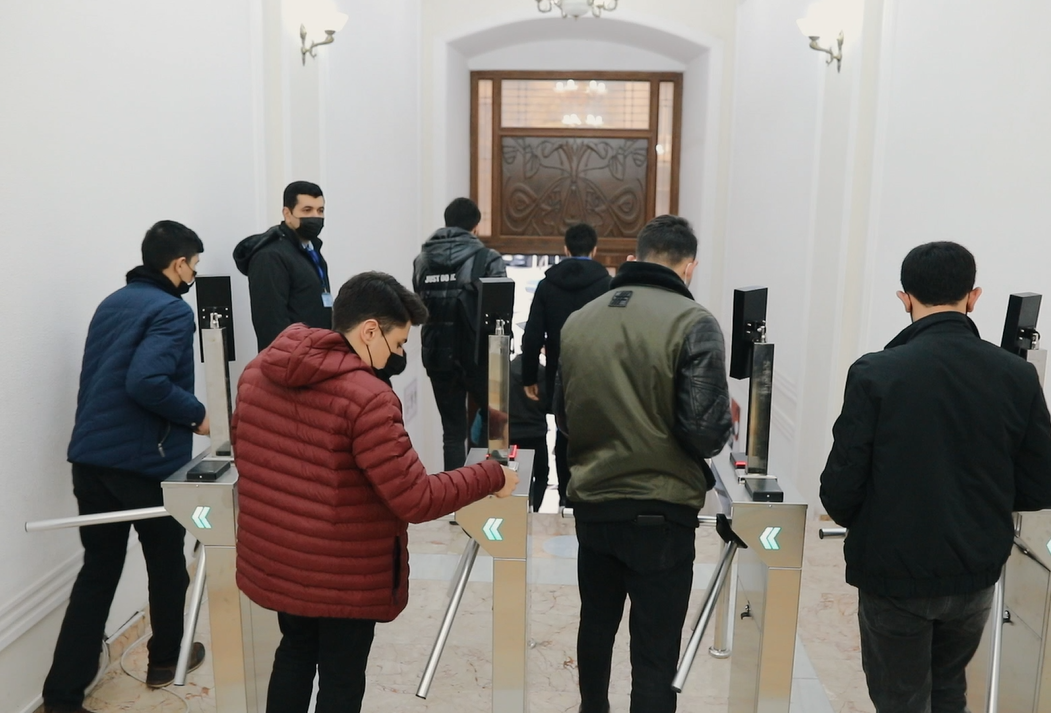
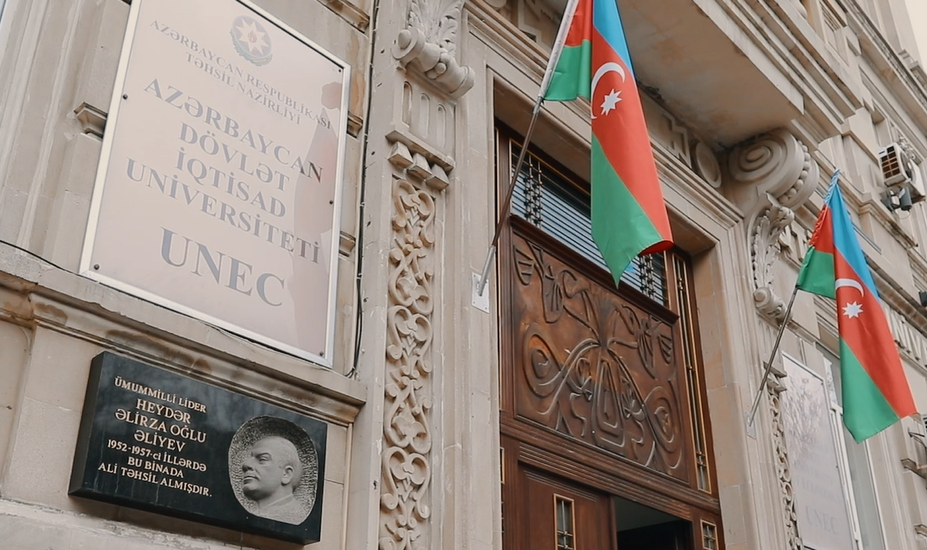
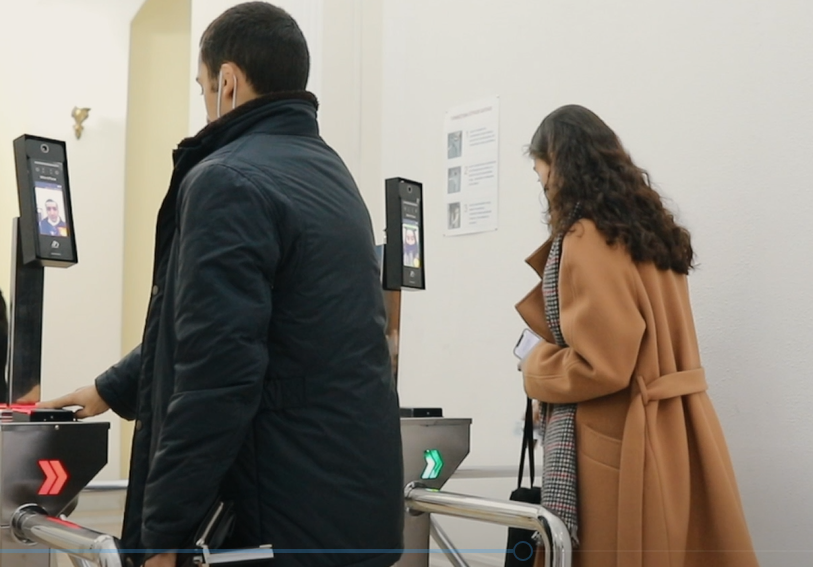

-
Re-establishment of the Basic and Backup Data Center for Demirbank
The purpose of the project
• Network upgrade, IT infrastructure reconstruction
• Establishment of a Data Center conforming to modern standards
The main problem was the technological obsolescence of all equipment in the IT infrastructure, non-conformity of the data center with security standards, the lack of a backup data center.
Data Center has an internal 160GB/s infrastructure with a speed of 40GB/s on each server. Online synchronization has been established between the two stores.
Establishment of primary and backup data centers
1.Iron screening of the room after construction to prevent electromagnetic radiation
2.Covering with unique materials and screening with plasterboard to prevent sound and moisture from entering the room
3.Laying of HST brand cables
4.Installation of fire-resistant ceilings and floors
5.Equipping fire doors
6.Installation of the biometric access system. Card and fingerprint access with the Virdi system
7.Installation of the automatic monitoring system. Provide smoke, temperature, humidity sensors and the ability to notify via SMS or e-mail when any changes are recorded
8.FM-200 gas fire extinguishing system, each room equipped with 6 sensors; the firefighting function is based on the selected mode.
9.Camera surveillance system
10.2 STULZ air conditioner systems with 71.7 KW made in Germany, fully controlled room temperature.
11.2 Tunçmatik UPS systems. Provides uninterrupted power supply
The result
• The Bank's infrastructure core was reconstructed.
• A primary and backup information center meeting modern standards has been established.
• The Bank's IT infrastructure and IT network were re-established.
• Differences in numbers between the former and the new systems
• 6-fold increase in storage capacity;
• 20-fold increase in connection speed between server and infrastructure
• 12-fold increase in RAM
• 4-fold increase in the number of virtual machines-
Development of a Corporate Database for PASHA Bank
A few years ago, PASHA Bank was assigned to develop a Corporate Data Warehouse (DWH). The purpose of creating DWH was to consolidate disaggregated detailed data from the Bank's information systems as a basis for mandatory and management reporting for all categories of employees. Such a solution would provide staff and management of the Bank with timely and consistent financial and client information.
The Bank uses various banking systems. Each system solves the problem of automating specific banking processes (for example, performing transactions, accounting calculations, etc.) and generating relevant reports. Moreover, the detail levels, approaches, and storage terms of financial, client, transactional, and other data differ. A variety of data, calculation methods, the frequency of their updating, and the duration of storage make the task of their analysis time-consuming and mandatory, extending the process of generating management reports.
ULTRA Technologies and Intellica Consulting offered a comprehensive solution from Oracle Corporation, containing an integrated set of necessary components: a relational database, an ETL tool for loading and transforming data, and tools for visualizing and exploring data.
The main criterion for the effectiveness and success of any project is the specific results of implementation. The main results of the performance include increased confidence in data and expansion of their nomenclature, technologies for preparing consolidated reporting when other financial and credit organizations are merged, sets of technological and business rules that allow you to control the processes of loading data and calculating indicators, monitoring mandatory ratios and financial indicators of the Bank as new reports.
To achieve prompt results, the project was divided into stages, due to which, after 8 months, the Bank was able to start the commercial operation of the solution and complete the implementation in the winter of 2020. Together with the consortium mentioned above of companies, the bank team continues developing and improving this solution, paying particular attention to data quality.-
Application of VxRail hyper-converged solutions for IBA
Concerning the relevance and reliability of the IT infrastructure principles, the International Bank of Azerbaijan (IBA) specialists concluded that the most critical computer equipment is morally and physically obsolete and needs to be updated. The key objective should be to replace such equipment to use the development perspectives and trends and compute capacity to achieve a significant increase and unlimited opportunities.
On the assumption that IBA currently has more than 100 virtual machines that are used to support a productive environment, and they had to be transferred to new hardware, ULTRA Technologies decided to offer a hyper-converged solution that met the customer's requirements. As a result, the Bank received several proposals from different manufacturers. The VxRail solution won the bid due to the unique technologies of Dell EMC, as it has some technical features that the closest competitors do not yet have.
What is hyper-converged infrastructure? Hyper-converged infrastructure (HCI) is a software-defined, unified system that combines all the elements of a traditional data center: storage, computing, networking, and management. This integrated solution uses software and x86 servers to replace expensive, purpose-built hardware and makes it possible to decrease data center complexity and increase scalability.
The use of hyper-converged infrastructure simplifies and automates infrastructure management and greatly accelerates the provision of requested resources.
HCI becomes part of a software-defined data center - a modern data center in which equipment configuration is automated as much as possible, and all infrastructure elements are managed centrally.
By introducing VxRail, we have significantly reduced the time to deploy new systems, and the performance of some tasks has increased considerably. As a result, the Bank found what it was looking for - the most flexible and scalable IT infrastructure and a solution that will help improve the quality of services provided by the International Bank of Azerbaijan.-
Application of Dynatrace application monitoring for Kapital Bank
Probably you have a mobile application from Kapital Bank on your smartphone. So what is behind the stable operation of this application?
Kapital Bank was looking for a monitoring system that would ensure the stability of applications and help them quickly fix problems. The word "promptly" means before the user faces the problem. Ideally, the system should help to work with current projects and be helpful in the development of future ones. For example, a company like Kapital Bank cannot afford to launch a "raw" product that will not be able to withstand the loads.
Before working with Dynatrace, the Bank worked with open source solutions for a long time, developing modules themselves. But this approach did not meet their expectations and requirements. Instead, the Bank gradually rejected various candidates in selecting corporate monitoring due to non-compliance with specific criteria. However, due to integrator - Ultra Technologies and distributor - BAKOTECH, the Bank was able to test and implement a solution that covered all their needs.
The Dynatrace platform demonstrated the best match on the following points:
• Ability to work not only in the cloud; Azerbaijani legislation requires storing user data directly on the Bank's resources. Complete cloud solutions do not meet these requirements.
• Monitoring based on artificial intelligence. Monitoring convenience was enhanced by AI Davis®, artificial intelligence that builds behavioral evidence-based application services as it operates and notifies if they stop functioning. Banking products have a very heterogeneous load daily, while Dynatrace can optimize resources on its own, allowing applications to work stably at any time.
• Monitoring the whole infrastructure- Often, the cause of the problem lies more profound than it seems. We began to see the true causes of problems even if they were in other parts of the system.
• Notification system. Dynatrace sends notifications not only to instant messengers but also to its convenient mobile application. This dramatically accelerates the problem-solving process.
The speed of implementation of Dynatrace was a big plus.
The whole system was deployed and launched in 4 days.
In the age of containers and clouds, dozens of applications can run on a single host, and many testing and development technologies are used. A massive plus of Dynatrace is that it lightens the technical department's burden. The system does not need to be configured separately for each application. OneAgent (single agent) allows the system to do it. Dynatrace's infrastructure monitoring capabilities eliminate the need for each department to use different tools to monitor their areas. And if we briefly summarize the results of the implementation of Dynatrace in Kapital Bank, then we will notice the following:
• Improved stability of crucial systems. The entire infrastructure is controlled from a single console - this simplified and accelerated its maintenance. The causes of recurring problems have been identified and eliminated. The issues that have been a concern for a long time no longer cause inconvenience to the bank staff or its customers.
• Improved communication between teams. Due to a unified monitoring system, it has become easier for teams to collaborate and resolve issues.
• Increased speed of releases of new projects and their quality, Dynatrace operates with running applications and allows the conduct of complex testing of projects under development.
-
Establishment of the Centralized Compulsory Medical Insurance System (MITIS) for Compulsory Medical Insurance
The primary goal of this project was to establish a system that provides automated management capabilities at all stages of the process, creating a link between the participants of compulsory health insurance.
Compulsory Medical Insurance (CMI) is a state social protection system aimed to protect the health of citizens. The purpose of CMI is to provide medical care to citizens when needed at the expense of funds raised at the compulsory health insurance fund.Advantages and consequences
1.Establishment of a single medical insurance base for citizens;
2.Ensuring transparency in the compulsory health insurance process;
3.Centralized registration and control;
4.Integration with medical institution systems;
5.Automation of medical insurance processes;
6.Simplification of medical insurance procedures;
7.Establishment of a system in compliance with the relevant legislation of the Republic of Azerbaijan.
-
Unified Centralized Library Information System
ALISA system (Automated Library Information System of Azerbaijan) was developed commissioned by the Ministry for Culture and Tourism of the Republic of Azerbaijan. There are various library systems in Azerbaijan, but there is no integration and a standard approach. Instead, our primary goal was to establish a unified, centralized library information system based on the latest technologies that automate and simplify library processes and relations with readers, allowing integration with other world library systems.
ALISA conditionally consists of two parts: the Public Part - the Centralized Unified Library Portal and the software for administrative and internal use. In addition, our Company developed all system elements based on the up-to-date Oracle platform.
The system has already been implemented in three central libraries of Baku - Khatai CLS, Narimanov CLS, and Sabail CLS as a pilot project. During the implementation of the ALISA system, which has a user-friendly interface, our Company's team worked closely with libraries, conducted training for library staff, and provided full support.
In developing the system, the working group benefited from the experience of the world's most advanced library systems and closely worked with specialized library specialists. The ALISA system is a web-based system developed using the latest technologies. The system based on MARC21, ISO2109, UNICODE, Z 3950, and other standards and protocols includes all functions to complete the whole automation processes of all national, public, private, academic, and school libraries.
To take a brief look at modules, the system consists of compilation, cataloging, e-catalog, management and organizational structure modules, detailed search, online operations, booking, book delivery, reporting, statistics, and other modules.
The ALISA system is a complex project to develop the Azerbaijan library system. The system completely automates the system of ministry control, the internal processes of the library, and library-reader relations and stimulates the creation of the necessary environment for this process. Thus, the reader can register by choosing any library without visiting there, can use the reader's ticket - plastic card at all the libraries of the republic, order online and reserve the desired publication, come to the library and order the reserved publication, monitor the order status on the e-queue monitor, take the order, return the book to the library using special equipment. In addition, the library management can review reports on the internal processes of the library. Finally, the Ministry of Culture and Tourism Management controls all libraries and gets any reports.
This step taken for the further development of the library system of Azerbaijan will lead to the transformation of the country's library system into the most advanced library system in the world and its integration with world library systems.

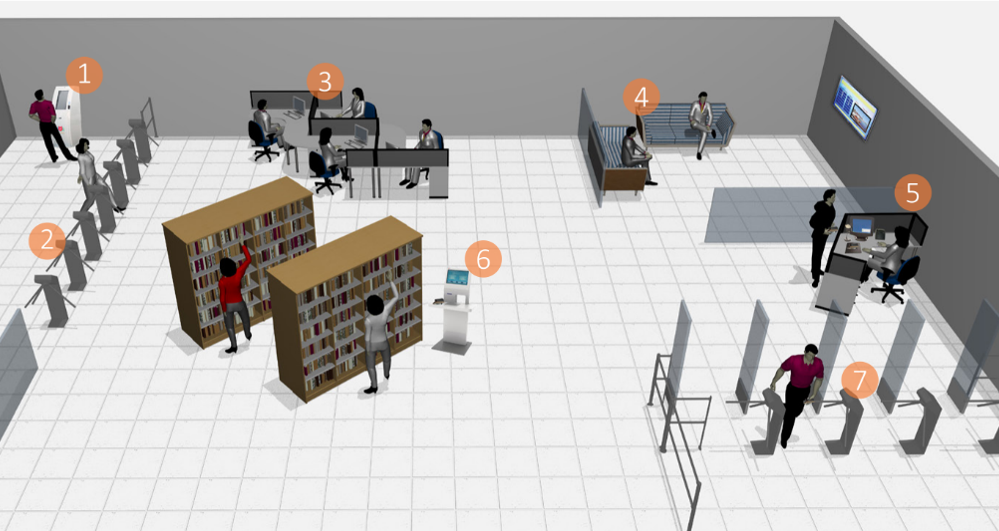


-
System integration is one of the main activities of our Company.
Over the past 10 years, our Company has implemented projects to establish more than 10 Data Centers in public and private organizations, 3 of them are Container Type Data Centers. The latest technologies of HP and Huawei, the world's leading manufacturers in the establishment of Data Centers, were used. The establishment of room or container type data centers is a responsible and complex process.
The establishment process of the Container Type Data Center at the Ministry of Education of the Republic of Azerbaijan is briefly demonstrated in the video clips.
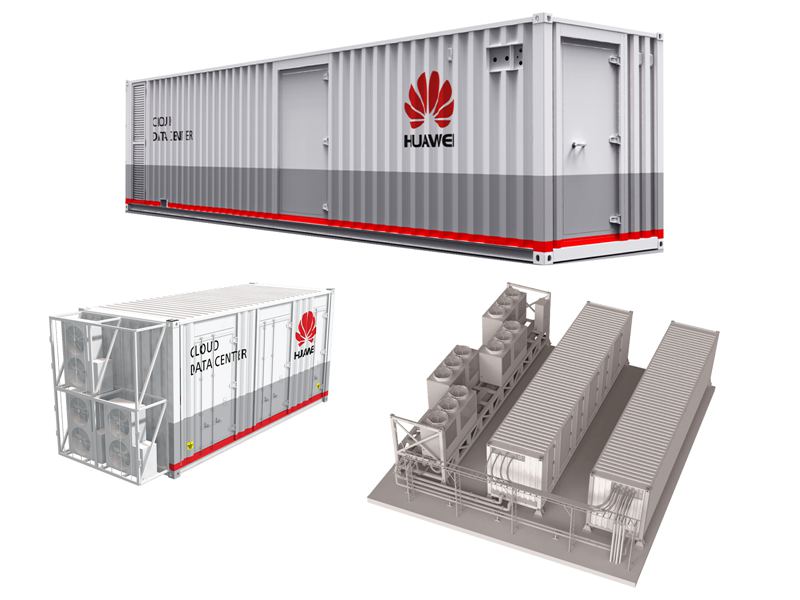
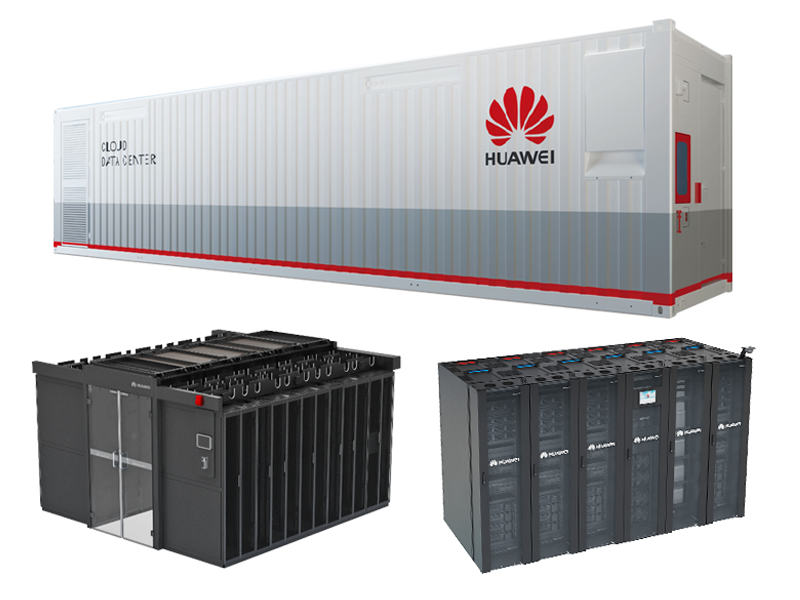
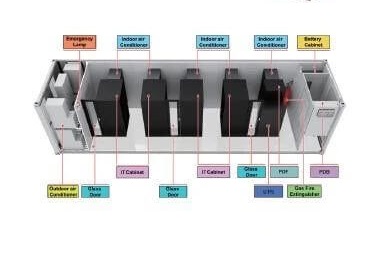

-
Development and support of the Eurovision.az portal
Since the launch of the www. eurovision, az portal, the ULTRA company has been engaged in its technical support. During "Eurovision 2012," all news, photo, and video materials were added to the portal by a particular working group assembled from the employees of ULTRA company. "Еurovision 2012" portal includes information in the Azerbaijani and English languages. The multi-language method used initially in the portal development enables adding additional languages at any time.
The portal includes the latest news related to the preparation and conduction of the contest and the press releases from the various events dedicated to "Еurovision 2012". You can get information about Azerbaijan and Baku, where the event is held. Due to the section "360 view," you can take a virtual tour of the capital.
Three portal versions were developed: for personal computers, tablet devices, and mobile versions. Having multiple portal versions allows the device to load the optimal mode automatically and makes the portal's navigation more comfortable.
Either local or foreign specialists were involved in the development of the portal. The foundation of the portal (CMS) was written from the ground up without using templates. All portal components developed for this project have never been used before. Special attention was paid to the security and the fault-tolerance of the portal. In compliance with the requirements for safety and reliability, foreign auditing companies were involved. In addition, a designated area was provided in the office of ULTRA Company to monitor the portal and control the server's condition.
Since the launch of the "Eurovision 2012" portal, the portal has been used with great interest in many countries worldwide. During the "Eurovision 2012" song contest, more than 40 million users visited the portal. The main influx of the visitors was registered from CIS countries, Turkey, Germany, and Ukraine.
ULTRA company was awarded the honorary diploma of the Ministry of Communications and Information Technologies of the Azerbaijan Republic for developing and maintaining the security of the "Еurovision 2012" song contest portal.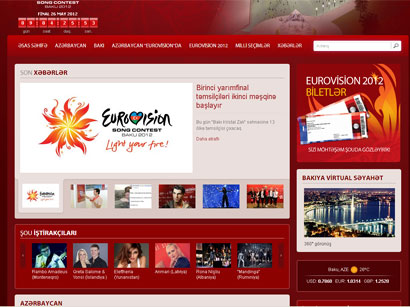


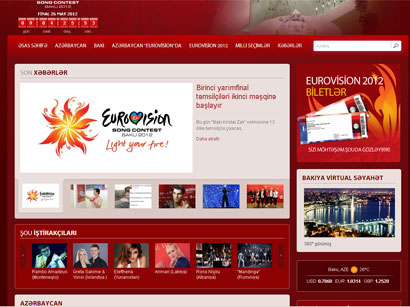


-
-
-
-
-
-
-
-
-
-
-
-
-
Our projects find resonance in the world of technology
